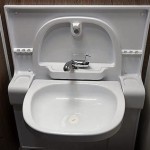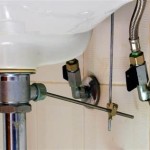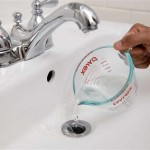Building Code for Bathroom Vents: Ensuring Safety and Health
Bathroom ventilation is essential for maintaining a healthy and safe environment within a residence. Proper ventilation helps to remove moisture, prevent mold growth, and control odors. Building codes establish minimum requirements for bathroom ventilation to ensure these critical functions are met. This article will explore the key aspects of building codes related to bathroom vents, providing a clear understanding of their importance and implications for construction and renovation projects.
1. Minimum Ventilation Requirements
Building codes specify minimum ventilation requirements for bathrooms based on factors such as bathroom size and the presence of showers or tubs. The most common requirement is a minimum of
50 cubic feet per minute (cfm)
of ventilation for a bathroom with a shower or tub. This ventilation rate is usually achieved through a mechanical exhaust fan, but other methods, such as natural ventilation through a window, may be permitted in certain situations. The code may also specify the location of the exhaust fan, typically near the shower or tub to effectively remove moisture and steam. Furthermore, codes often require the fan to operate for a predetermined period, typically20 minutes
, after each use of the shower or tub to ensure adequate ventilation.2. Exhaust Fan Requirements
Building codes often specify requirements for exhaust fans in bathrooms, including their capacity, location, and operation. The fan's capacity is typically measured in cubic feet per minute (cfm) and must meet the minimum ventilation requirements for the bathroom size, as outlined in the code. The fan should be located in the bathroom's ceiling or wall, preferably near the shower or tub, to ensure efficient moisture removal. The fan should also be easily accessible for cleaning and maintenance. Additionally, the fan should be equipped with a timer or humidity sensor to ensure it continues to operate for a sufficient duration after use. Building codes may also specify the allowable noise level for the fan, ensuring it doesn't disrupt occupants' comfort.
3. Ductwork and Venting
Building codes also address the requirements for ductwork and venting associated with bathroom exhaust fans. Ductwork, typically made of rigid or flexible materials, connects the fan to the vent termination point, usually the exterior of the building. The ductwork should be properly sealed to prevent leakage and ensure adequate ventilation. The vent termination point should be located at a minimum distance above the roofline, as specified in the code, to prevent backdrafting. Additionally, the vent should be designed to allow for easy access for cleaning and maintenance. Codes may also specify the type of vent termination, such as a louvered vent or a roof-mounted vent, to prevent moisture and odors from entering the attic space.
4. Inspections and Compliance
Building codes often require inspections to ensure that bathroom ventilation systems meet the specified requirements. These inspections may be conducted by a building inspector or a qualified professional during the construction or renovation process. The inspector will verify that the fan's capacity, location, ductwork, vent termination, and other relevant aspects comply with the code. Compliance with building codes is crucial to ensure the safety and health of occupants and the integrity of the building. Failure to meet these requirements may result in fines, delays in construction, or even the rejection of the project.
5. Importance of Ventilation in Bathrooms
Proper ventilation in bathrooms is critical for several reasons: *
Reducing Moisture and Mold Growth:
Bathrooms are prone to high humidity levels due to showering and bathing. Proper ventilation helps remove excess moisture, preventing mold growth on walls, ceilings, and other surfaces. Mold is a health hazard, causing respiratory problems, allergies, and other health issues. *Controlling Odors:
Bathroom ventilation helps to remove unpleasant odors associated with showering and bathroom use. *Improving Indoor Air Quality:
Ventilating moisture and odors from the bathroom helps maintain healthy indoor air quality throughout the house. *Preventing Structural Damage:
Uncontrolled moisture can lead to damage to building materials, such as wood, insulation, and drywall. Proper ventilation helps protect against these damages. Proper bathroom ventilation is crucial for maintaining a healthy and safe living environment. Building codes provide essential guidelines to ensure that ventilation systems meet minimum requirements.
How To Use An In Line Exhaust Fan Vent Two Bathrooms Diy Family Handyman

Bathroom Regulations Vent Axia

Methods Of Venting Plumbing Fixtures And Traps In The 2024 International Code Icc

Code Requirement For Bathroom Vent Location Exhaust Checkthishouse

Bathroom Exhaust Fans Building America Solution Center

We All Like To Vent Dealing With The Hot And Moist Air Ncw Home Inspections Llc

Can A Bathroom Fan Vent Into The Attic Code Explained Building Trainer

How To Vent A Toilet Sink And Shower Drain

Vent Options For Plumbing Drains Fine Homebuilding

Bathroom Exhaust Fans Building America Solution Center
Related Posts







